Maggie Glasser, 2022 CEL Impact Award winner, wrote this for the Olin Blog.
Like any other day as a full-time MBA student, my schedule was filled with classes and schoolwork. By 8 p.m. that night, it felt like my day was just starting. I was fully immersed in the land of Excel and PowerPoint, sifting through data and formatting slides in anticipation of our final Center for Experiential Learning client meeting. Also on my list was preparing for tomorrow’s team meeting, where I faced the difficult task(s) related to maintaining my team’s motivation while respecting the normal stressors of B-School. The days were long, but I enjoyed my after-hour work sessions because it was a time where distractions dwindled and productivity climbed.
Like many practicum consulting engagements with the CEL, I was equipped with a team of three to five graduate and/or undergraduate students to solve a real-world problem that was not outlined in a textbook. We channeled our professional and classroom experiences to create meaningful and lasting value for our corporate client. As the team lead, I was tasked with the additional responsibility of creating sustainable team dynamics. For me, this meant blending personalities, developing candid communication and establishing accountability so that we could effectively align on a common goal and create valuable experiences.
I approached the projects with professional expectations and delivered a “this-experience-is-what-you-make-it” message with my teams from the get-go. The CEL is organized with the goal of providing just that: the structure to support teams through a professional consulting engagement along with the autonomy to craft your own experience. Here’s a three-point guide explaining how I shaped my CEL experiences to drive returns beyond business school:
1. Create a foundation of support and discovery
My first engagement with the CEL was in spring 2021, when I was offered the opportunity to serve as team lead for a family-owned and St. Louis-based HVAC company, Hoffmann Brothers. As a team, we were tasked with developing a systematic approach of analyzing geographic market entry. Our first objective was to create a structure for the project by developing a Statement of Work. Soon after, the chaos commenced. Within two days, we went from a team of six to a team of four and a personal matter placed me on a short leave of absence. It was during this time that the CEL leadership team not only stepped in, but also stepped up. A combination of one faculty advisor, one CEL scholar and the CEL program team helped us navigate through these unexpected distractions alongside demanding client expectations.
In many ways, the project enabled an ecosystem of discovery. As a project team, we merged our diverse experiences and perspectives to unpack a complex business problem in a supportive and risk-tolerant environment that left room for learning through mistake and recovery. As the team lead, I put leadership theories from the classroom into action by embarking on a journey of trial-and-error to uncover who I really wanted to be as a leader. In managing the delicate balance of project management and personalities, I started to construct a sustainable leadership style based on my own discoveries and real-time feedback from others.
After this engagement, I was hooked. I not only made the decision to pursue a career in management consulting but was also offered the unique opportunity to re-engage as the team lead for Hoffmann Brothers the following semester.
2. Build a structure to facilitate and accelerate growth
Equipped with a new problem, a new team and a new skillset, my goal was to surpass the high standards that were established during my first engagement. This time, our project focused on the second pillar of business growth strategy: generating value, driving profit and creating sustainable competitive advantage through service line expansion. Our team was collaborative in nature as we supported and challenged each other to reach the next level. As their leader, I started with a foundation of skills and ideas formed by the first engagement. This allowed me to refine my processes and build a structure that helped the team increase individual efficiencies and unlock their collective potential. Together, these conditions created the simultaneous reality of learning and working, which lead to explosive growth for my team, our client and myself as a leader.
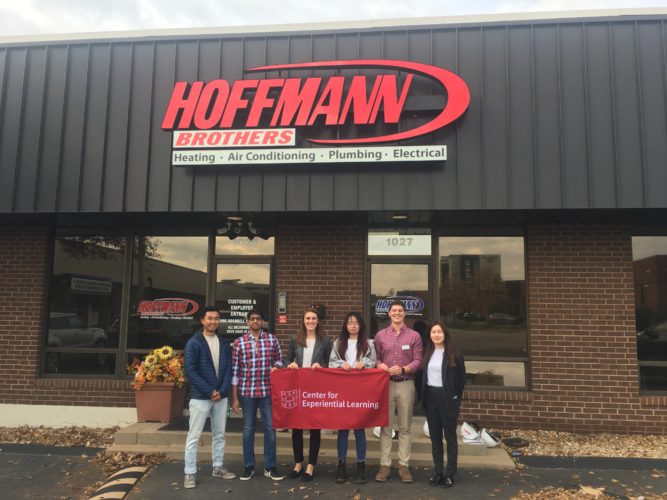
Fall 2021 Hoffmann Brothers CEL Practicum Team. From left: Johnnie Teng, Darwin Bhatt, Maggie Glasser, Yijie Zhang, Brendan Barry, Xin Wang.
The CEL is organized like a management consulting firm in that there are layers of opportunity. Team members, equivalent to staff-level consultants, conduct research and interviews, build models and own individual work stream(s). Team leads, or project managers, structure the project, communicate with the client, manage output and synthesize the team’s work into a cohesive analysis. Lastly, CEL scholars, or senior executives, oversee the entire operation, ensure quality and consistency of outcomes, and nurture client relationships.
3. Polish skills to drive lasting outcomes
After two successful engagements as a team lead, I was asked to join the team of CEL scholars. Accepting this role provided an avenue for me to improve my management skills in new and different ways. In addition to my responsibility to support four new team leads as individual leaders, I also advised their project teams in pursuit of achieving their shared goals. For me, this meant balancing the hands-on approach I adopted as the leader of my own teams with a hands-off approach that left the team leads the room to craft their own experiences. The direct result pushed my boundaries as a leader into an entirely new dimension: I reinforced the art of asking thoughtful questions, shifted from listening with an intent to respond to listening with an intent to understand, and started offering options instead of prescribing methods.
As I reflect on my CEL experiences, I am now able to recognize the compound effect(s) it indelibly had on my growth as a leader. Each day, I had a platform to test a range of skills in small ways, and the effects multiplied. While any single engagement with the CEL delivers value, it was the aggregation of my three experiences that will ultimately drive lasting impact in the next phase of my career as a professional consultant.
Pictured from top left to bottom right: Maggie Glasser (team lead), Claudia Zhang (team member), Kranthi Reddy Puligari (team member), Alex Ignatius (CEL scholar), Chumar Williams (team member).


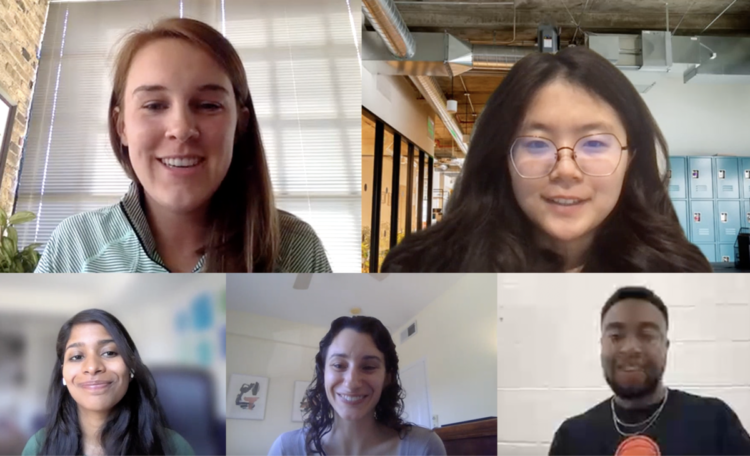
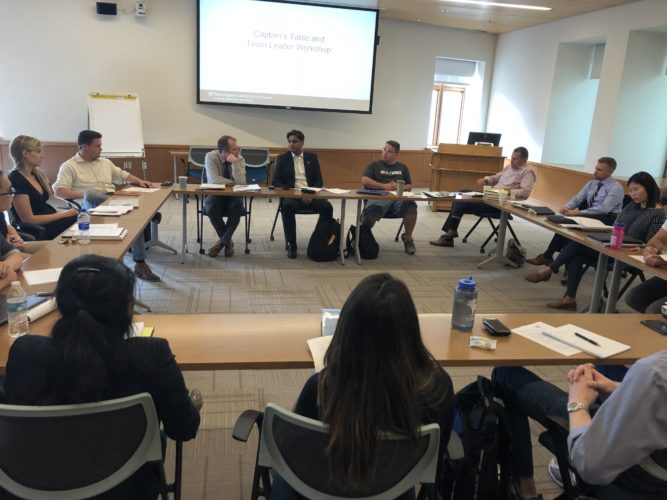
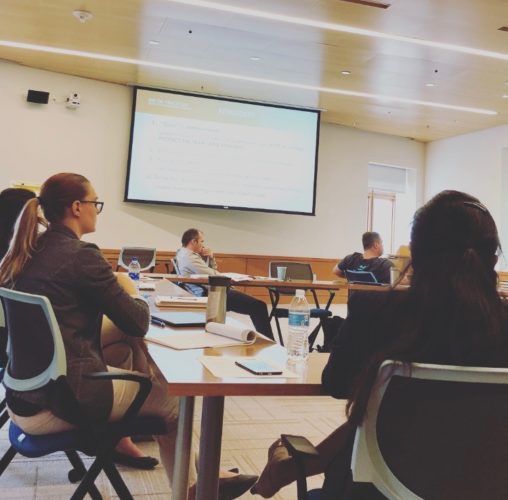

 Jeff Brown, MBA ’19, wrote this on behalf of his practicum team from the Center for Experiential Learning. MBA ’19 team members included Jeff Brown, Abdul Rehman Azmat, Grace Lee, Ricardo Marrujo Mexia, and Samuel Roth. The project advisor was Rich Ryffel.
Jeff Brown, MBA ’19, wrote this on behalf of his practicum team from the Center for Experiential Learning. MBA ’19 team members included Jeff Brown, Abdul Rehman Azmat, Grace Lee, Ricardo Marrujo Mexia, and Samuel Roth. The project advisor was Rich Ryffel. 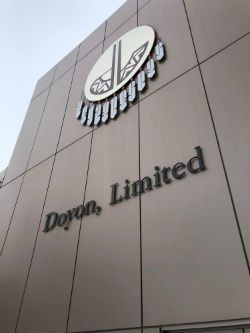 In our first week on the project, we had the pleasure of meeting Doyon executives in person. Throughout the day, we interacted with the client professionally and—just as importantly—personally. too. This time spent together allowed us to better understand Doyon’s business and helped build a rapport that was useful during subsequent meetings. We became more confident that we could ask difficult questions, and at the same time, the client gave honest feedback on our work. In the end, because of the trust we built, we delivered a better final product and more value for Doyon.
In our first week on the project, we had the pleasure of meeting Doyon executives in person. Throughout the day, we interacted with the client professionally and—just as importantly—personally. too. This time spent together allowed us to better understand Doyon’s business and helped build a rapport that was useful during subsequent meetings. We became more confident that we could ask difficult questions, and at the same time, the client gave honest feedback on our work. In the end, because of the trust we built, we delivered a better final product and more value for Doyon.


